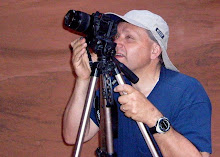Friday, November 21, 2008
Betatakin Ruin - Navajo National Monument
The first time I ever saw Betatakin, I was a teenager visiting with my parents. I was overcome by the enormity of the alcove in this hidden canyon. We viewed the ruin from the opposite canyon rim and the ruins themselves were difficult to distinguish from the rest of the sandstone cliff. The next day, we headed into the canyon, climbing down a rickety wooden staircase fastened to the sheer canyon face. In my youth, I feared that every step would be my last, yet I was drawn seemingly headlong to my certain death at the canyon floor. Once firmly on the bottomland of the canyon, I found myself in a verdant valley filled with the sounds of crystal clear spring water rushing over the sandstone puctuated by the voices of birds and the wind in the aspen leaves. It was as if a small piece had been plucked from heaven and placed in this desert wilderness. I trod the path where countless Anasazi children had walked leading to the village on the edge of the alcove. Hundreds had lived here centuries ago, and then mysteriously, one day walked away from this paradise home. The trail I followed no longer exists. It was considered unsafe with age and was not rebuilt in a time where we have come to understand how we impact these fragile sites. The trail leading to this site now follows another route three miles longer, but barely visible from the rim and today's visit can only be made with a park ranger. Some day, I would like to make the 17 mile journey to Betatakin's sister city, Keet Seel. My parents brought me here and taught me to honor those whose country this was before we came. I have now brought one of my children here and hope to return again. I wonder if those who left thought they too would come back to their home on the cliff.
Subscribe to:
Post Comments (Atom)



No comments:
Post a Comment